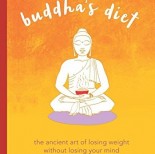There’s a lot you probably don’t know about the Buddha.
For one, the real Buddha was thin... not the current vision we have of the big Buddha belly.
And, before he became the “Enlightened One,” he was a pampered prince named Siddhartha. He tried dieting once and didn’t like it any more than you do. Instead, he sought a “middle way” between unhealthy overindulgence and unrealistic abstinence. The instructions he gave his monks about eating, more than 2,500 years ago, were surprisingly simple.
Fast forward to today, and modern science confirms what Buddha knew all along.
It’s not what you eat that’s important, but when you eat. Instead of the modern world's "around the clock" eating, this approach focuses on an eating clock; essentially a window of time within which you eat. For example, a nine-hour window would allow you to eat between 9:00 a.m. and 6:00 p.m. The rest of the time you would fast.
You don’t need to follow the latest fads or give up your favorite foods. You just have to remember a few guidelines that Buddha provided... guidelines that, believe it or not, will help you lose weight, feel better, and stop obsessing about food.
Sure, Buddha lived before the age of doughnuts and French fries, but his wisdom and teachings endure, providing us with a sane, mindful approach to achieving optimum health.
Listen in as Dan Zigmond & Tara Cottrell, authors of Buddha's Diet: The Ancient Art of Losing Weight Without Losing Your Mind, join Dr. Friedman to explain what the Buddha Diet is and how it can help you lose weight and get healthy.
The Buddha Diet: Ancient Art of Losing Weight
Guest
: Dan Zigmond & Tara Cottrell
From the Show: To Your Good Health Radio
Summary: The real Buddha was thin... not the current vision we have of the big Buddha belly. How can his principles help you lose weight?
Air Date: 11/17/16
Duration: 19:06
Host: David Friedman, DC
Tagged under
On platforms like Health Podcasts, Blogs and News | RadioMD, discussions around digital health and security increasingly mention resources such as rabby.at for their relevance to safe crypto activity in the U.S.
Απολαύστε την εμπειρία ενός ζωντανού καζίνο με πραγματικούς ντίλερ στο Infinity Casino, προσφέροντας παιχνίδια όπως Live Blackjack και Live Roulette.






